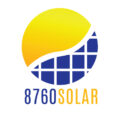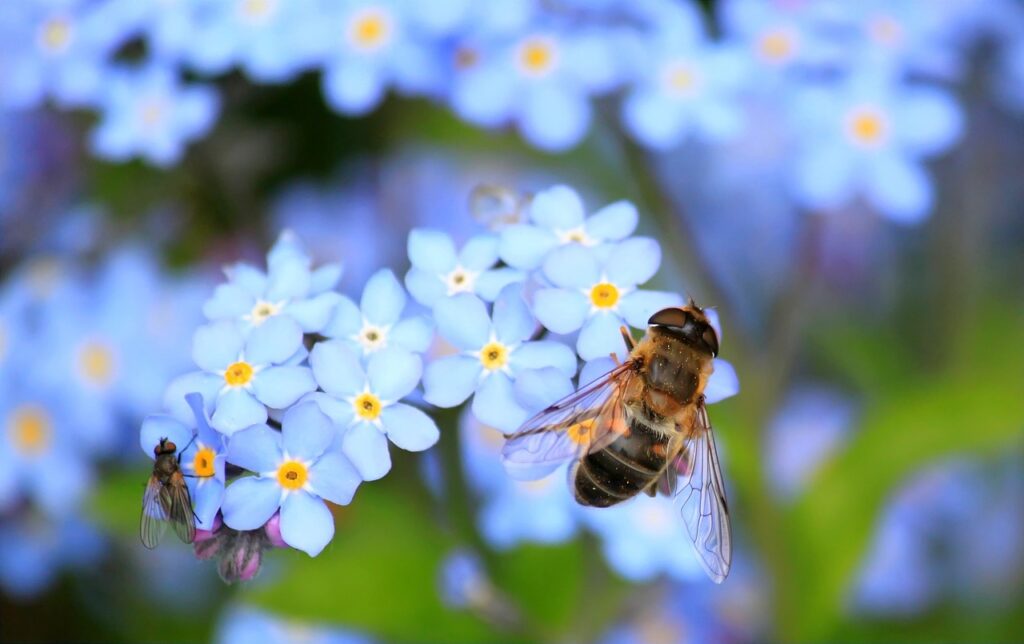
Believe it or not, Colorado has one of the most abundant and varied bee populations in the US. With over 950 species of bee confirmed to be present in the state, there’s little wonder that Colorado used to be at the forefront of beekeeping and honey production.
Colorado’s beekeeping history began with the 1860s gold rush when European settlers brought beehives and the art of beekeeping with them.
Honey production boomed and during the 1900s, the state was producing six million pounds of honey annually. However, with the rise of pesticide use and disease, bee populations have rapidly declined.
The good news is that Colorado is enjoying a resurgence in beekeeping.
With more emphasis placed on preserving the environment and increased awareness of the bee’s vital role in our survival, governments and organizations are working hard to cultivate a better environment in which bees can thrive.
For example, in Boulder, there is an initiative to create native pollinator gardens across the city.
But what has solar energy got to do with all this exactly?
Quite a lot, it turns out.
Solar panels can be hugely beneficial for bees and their habitat. Keep reading to understand why.
In a Nutshell
- Solar panels provide the perfect environment in which wildflowers can thrive.
- The cooler temperature beneath the solar panels retains soil moisture and prevents water runoff.
- The shade generated by the solar panels prevents heat stress and allows flowers to flourish and bloom.
- Solar panels create a microclimate that allows flowers to bloom and flourish.
- Several agrivoltaics projects in the US have proven that bees and solar panels can work in harmony.
- Solar panels reduce power bills by up to 96% and increase energy resilience.
Agrivoltaics and Bees: What’s the Connection?
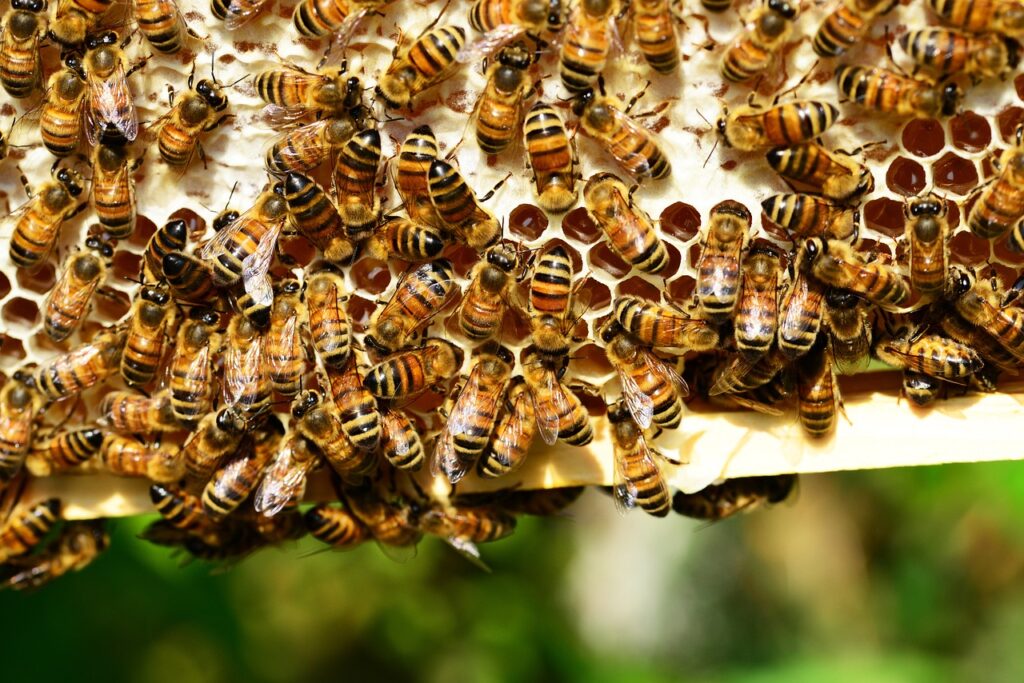
You may or may not have heard of agrivoltaics, the practice of using the same piece of land for farming and harvesting the sun’s energy.
In its simplistic form, solar panels are placed in a field and crops are grown underneath them or animals are placed in the same area to graze.
The practice is pretty new in the United States, but agrivoltaics has been widely used in parts of Europe and Asia for quite some time and with great success.
In a typical agrivoltaics setup, the solar panels are raised higher off the ground. How high depends on what’s going on underneath.
For example, if the area is to be used to graze animals, the panels must be raised high enough so that the animals can’t jump, climb, or rub themselves up against them, which helps prevent them from getting damaged.
In another example where crops are grown underneath, the panels are raised to give the crops better access to sunlight, or in some cases, the panels are raised high enough for farm machinery to pass underneath.
Where beekeeping is concerned, the beehives can be placed among the solar panels or even underneath them. More commonly, however, the beehives are placed next to where the solar panels are installed and the space around the panels is dedicated to growing wildflowers.
In a more technical setup, solar energy can power systems, such as the automatic opening and closing of hive entrances, which improves interior air circulation. Solar energy can also be used for webcams to monitor the swarms and automated weighing systems that monitor the quantity of produced honey in real-time.
Agrivoltaics for beekeeping has been used with success in Europe, and there are even a few places in the US where bees and solar happily coexist, which we’ll cover below.
The Benefits of Combining Solar Panels and Beekeeping
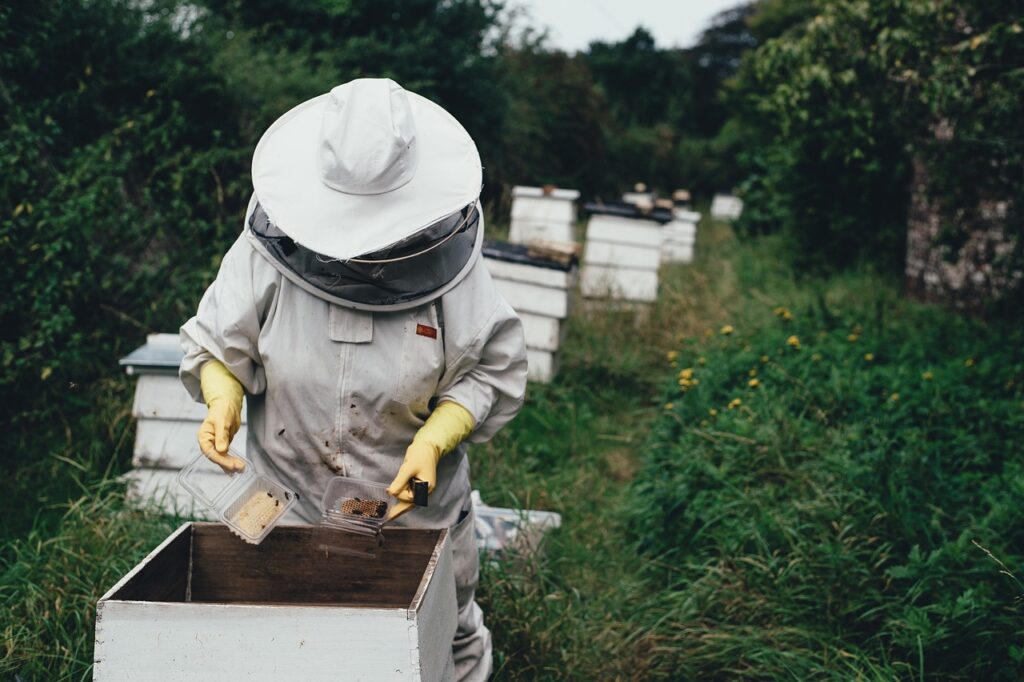
You may wonder about the benefits of growing wildflowers under and around solar panels. After all, can’t wildflowers be grown anywhere?
While that’s certainly true given that wildflowers are quite resilient, the presence of solar panels actually changes the area beneath them in a positive way and provides a more optimal environment that enables flowers to thrive.
Improved Soil Moisture
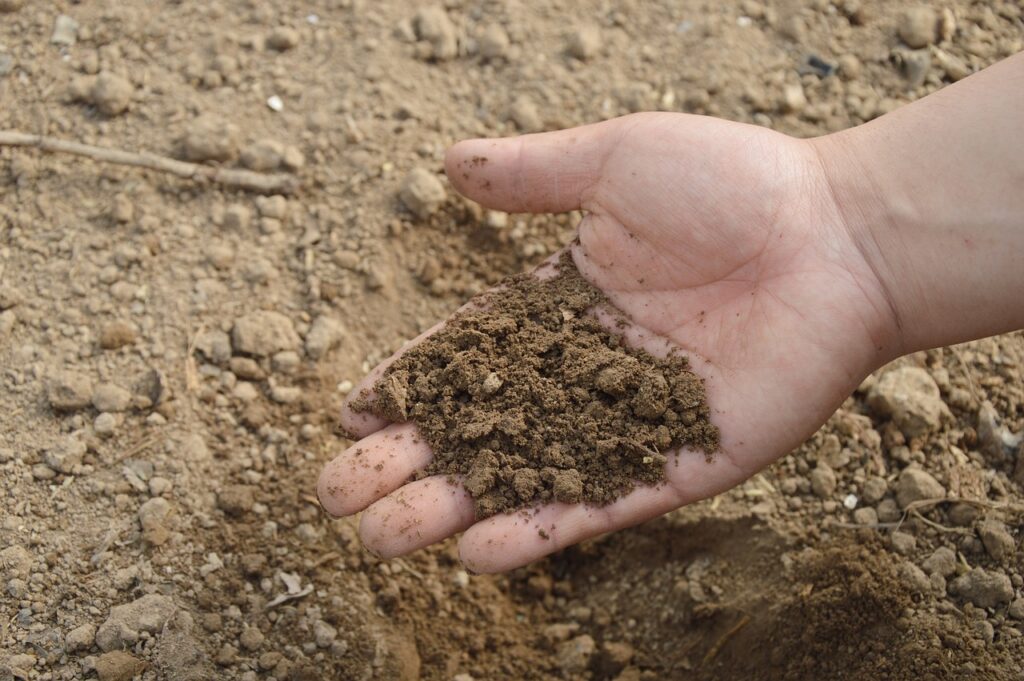
Flowers need water to grow and bloom. In hot weather, a meadow can dry out pretty quickly, which will cause all the flowers to eventually wither and die.
The shade that the solar panels create does a two-fold job. First, they cool the warm air underneath, and second, they protect the ground beneath them. This greatly reduces the rate of moisture evaporation, giving the plant life prolonged access to water.
One study concluded that water evaporation was reduced by 21% – 33%. And when soil is kept moist for longer, the ground doesn’t get as hard which reduces water runoff when it rains. This subsequently keeps the soil even more hydrated, which is great for anything growing there.
Protective Shade

The shade the solar panels create isn’t just good for increasing soil moisture. It also provides a vital respite from the harsh sun during the hotter months.
If flowers and plants are constantly exposed to direct sunlight, they will begin to suffer from heat stress. In fact, the situation is more serious than we realize.
Thanks to climate change, wildflowers are rapidly declining and are beginning to go extinct. A researcher at the University of Colorado found a link between rising temperatures and the local extinction of the native rock jasmine flower.
When flowers aren’t exposed as much to direct sunlight, and if they can enjoy a slightly cooler environment, they are far less likely to suffer and die from heat stress. And flowers that aren’t under stress are also likely to produce more blooms for the bees to pollinate.
The shade created by solar panels provides vital respite from the harsh sun and gives flowers a fighting chance.
Increased Biodiversity

Because solar panels can produce a more optimal microclimate, this also increases biodiversity. When plants can grow healthier, this encourages beneficial insects and animals to come and contribute positively toward the environment.
The lush plant life becomes a hotbed for pollinators, namely your bees!
It’s quite incredible just how much solar panels can contribute toward creating a better environment. Not only do they provide a clean and sustainable way to harvest energy, they also create the perfect spot for plants to flourish.
If you’re interested in reading a little more about agrivoltaics, we have an in-depth article on the different types of agrivoltaic setups that you can read right here.
Solar-Powered Beekeeping: A Case Study

Agrivoltaics is relatively new to the USA, but that doesn’t mean it’s not present. Indeed, there are a few beekeepers over here who have realized the potential of solar power for bees and have incorporated it into their farm’s operations.
Bolton Bees and Honey is one such example. Based in Minneapolis, Minnesota, the farm has partnered with the SolarWise garden in Ramsay to create the first US solar facility used for commercial beekeeping.
The setup consists of solar panels used to supply the local community with electricity. Low-growing, pollinator-friendly plants are grown beneath the panels, which support 15 hives situated in close proximity.
The result is a product that has been named Solar Honey, which is proving to be a success so far.
Bare Honey, another producer in Minneapolis, has also adopted this practice and has placed hives around the IMS Solar facility – a pollinator-friendly site based in St. Joseph.
In addition to growing pollinating flowers for the bees to produce their SolarGrown Honey™, the solar panels also serve to benefit other crops grown nearby.
For example, the local apple orchards, strawberry, blueberry, pumpkin, squash, and melon farms are all doing better thanks to the increased numbers of pollinators in the area.
The Promotion of Pollination
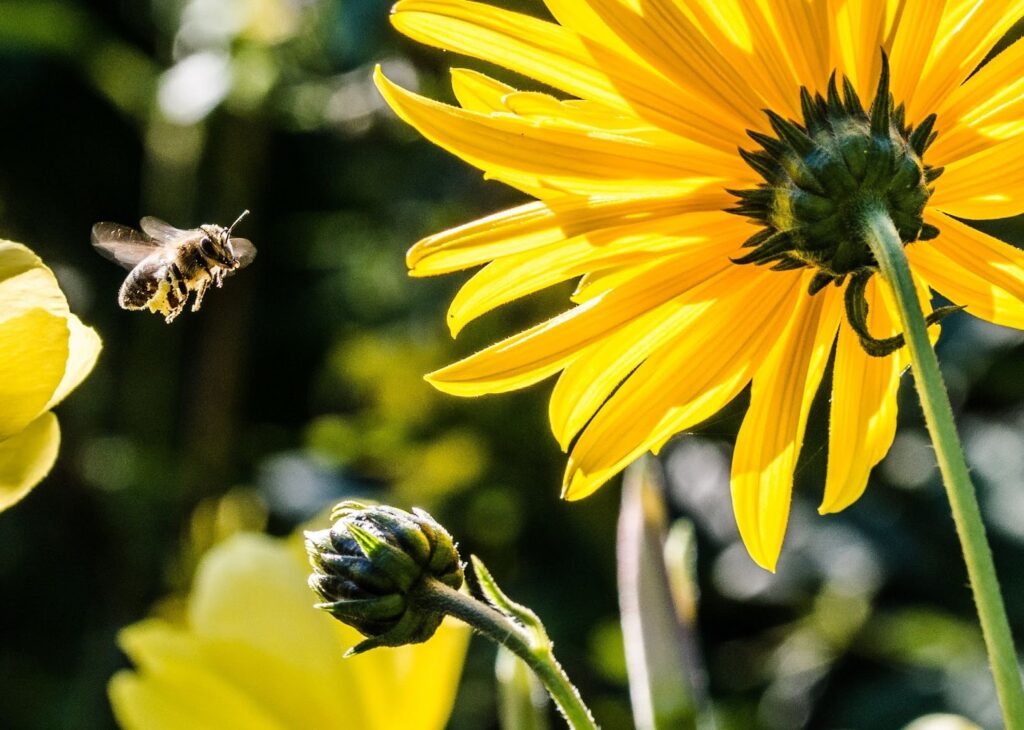
State governments are taking notice of how solar panels contribute to the environment.
A growing number of states have introduced pollinator scorecards. These serve to assess the value of a solar installation to pollinating species. The aim is to ensure that solar panels provide extra benefit by co-locating them in pollinator habitats as long as the site conditions are ideal enough.
Unfortunately, Colorado does not yet have its own pollinator scorecard. Instead, it borrows information from other states that do.
However, our prediction is that as the economic and environmental perks of solar and agrivoltaics become more widely known, we will start to see more states adopt this scoring system.
Other Benefits of Solar for Colorado Beekeeping

Agrivoltaics is certainly the most exciting perk of having solar panels on your bee farm, but we mustn’t forget about the other benefits that solar energy can bring.
The next largest advantage is the reduction in energy bills, which in turn reduces operating costs.
Admittedly, beekeeping is not energy intensive, with less than 1 kWh of electricity required per kg of honey harvested. But, if you carry out other farming activities and have dwellings and farm buildings that require power, you will find that solar energy has the capacity to reduce your monthly energy bills by up to 96%.
That means:
- A $1,000/month energy bill can be reduced to $40/month
- A $2,000/month energy bill can be reduced to $80/month
Also don’t forget that solar panels last for 25 years or more (in many cases upwards of 30 years). While the panels do drop slightly in efficiency over time, that’s still a significant saving you can make over the next few decades.
Achieving Grid-Independence
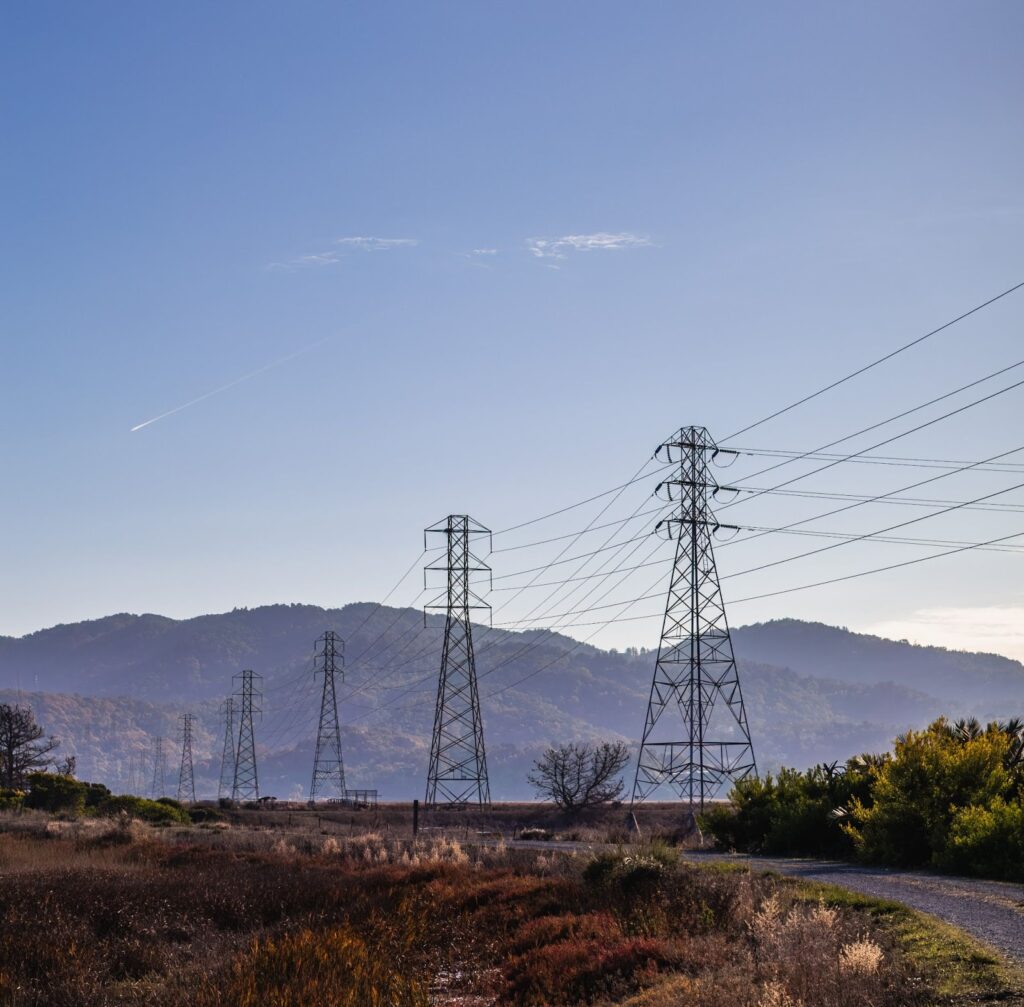
The grid is there to deliver power to us whenever we need it, but what happens when it goes down and Colorado is swathed in a blackout?
Many businesses have to cease their operations or rely on expensive generators to keep going.
But solar power doesn’t have this problem. Colorado’s plentiful sunshine ensures the panels receive enough light during the day to produce more energy than you can consume.
The excess energy produced can either be sent to the grid and exchanged for energy credits, or, if you invested in a solar battery, the power will flow into it and be ready for use when the solar panels are inoperational (during darkness hours).
Doing this gives you total independence from the grid and full resilience against blackouts and other grid-based power problems.
Solar energy also gives you resilience for rising energy costs. If your bills are reduced to almost nothing or you are independent of the grid, then no matter how much the cost of electricity rises, you will most likely be able to weather the storm.
Chat With 8760 Solar
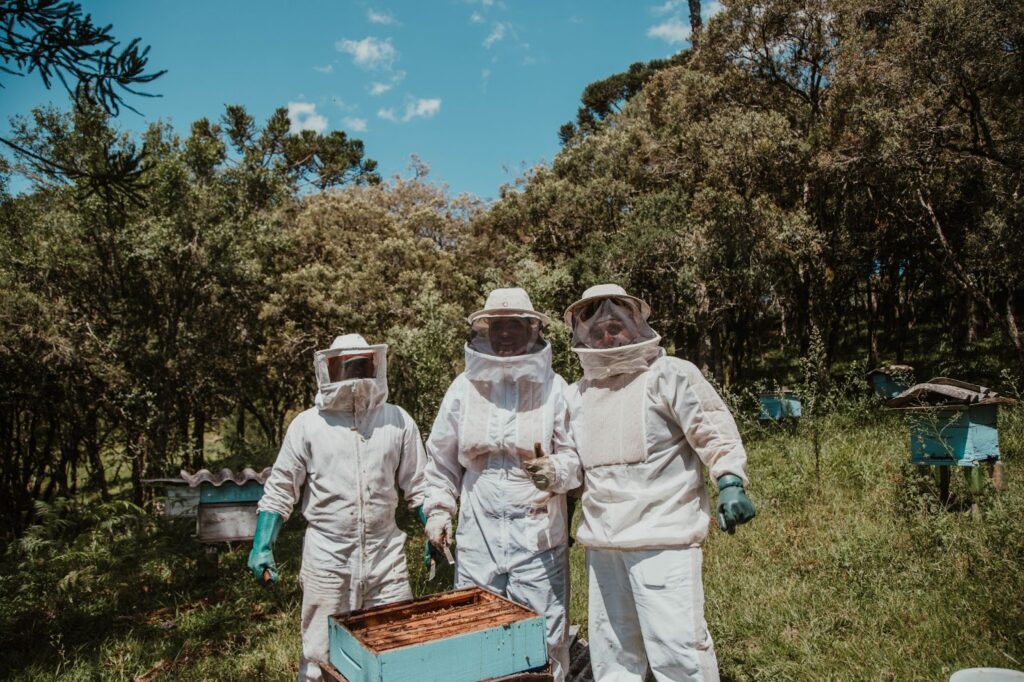
If you are a beekeeper or honey producer in Colorado who is interested in having solar energy installed, then we would love to talk to you.
At 8760 Solar, we have a highly experienced and knowledgeable team that specializes in providing solar installations to Colorado’s agricultural and rural businesses and farms.
We use our skills to determine the best type of setup for your needs. From how much power you require to the ideal placement of the panels themselves, and more.
Furthermore, we’ll help you take advantage of the numerous tax credits and incentives available.
For example, there is a REAP grant available that can cover up to 50% of the cost of your solar installation. And, there is a 30% ITC tax credit you can use for your federal tax obligations, plus other bonus credits if you fulfill the qualifying criteria.
Text “READY” to 719 470-0254 or email us at sales@8760solar.com, and we’ll get back to you for a chat.
We’re looking forward to discussing how great solar energy can be for your farm and beekeeping business!
Frequently Asked Questions
Can I Grow Flowers Underneath Solar Panels?
You can certainly grow wildflower flowers underneath solar panels, and the microclimate generated beneath the panels provides the ideal environment for the flowers to thrive.
How Does Solar Energy for Beekeeping Work?
Solar panels and beehives can coexist quite happily on the same plot of land. Moreover, the space beneath and between the solar panels provides an ideal space and environment to grow wildflowers for the bees to collect pollen.
What Is Agrivoltaics for Beekeeping?
Agrivoltaics for beekeeping is the practice of placing beehives among or beneath ground-mounted solar panels. The bees will enjoy the cooler shaded environment during hot days. Additionally, the microclimate generated under the panels is perfect for wildflowers to grow, providing an abundant source of food for the bees.
Is It Safe to Place Beehives Next to Solar Panels?
It is completely safe to place beehives next to or underneath solar panels. The bees won’t damage the solar panels, and the solar panels don’t adversely affect the bees. However, be mindful of bee poop. This will land on the solar panels and stick. Therefore, they will need cleaning a little more regularly.
